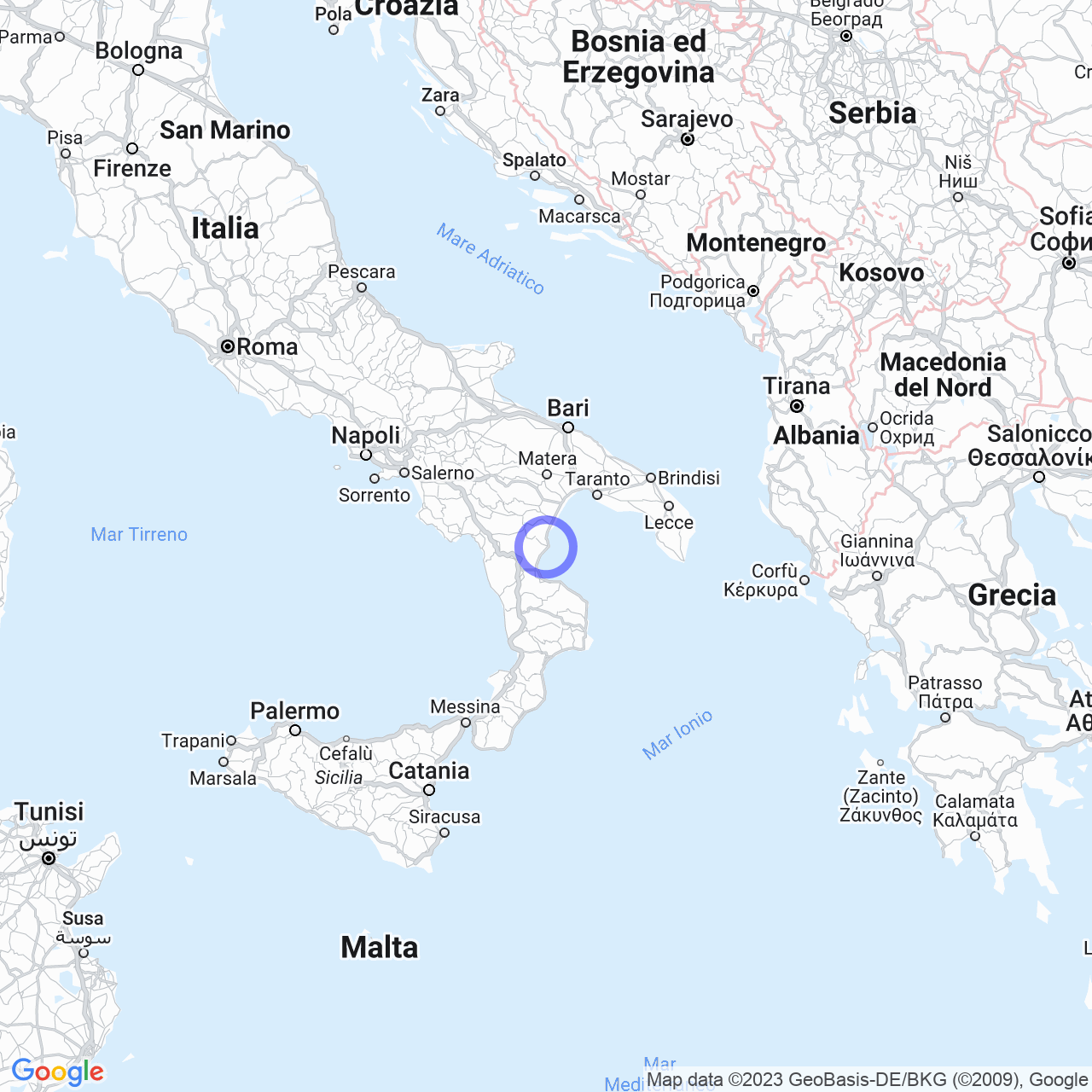Amendolara
Discover Amendolara, the Calabrian town overlooking the sea
Welcome to Amendolara, a coastal town in the province of Cosenza, located in Calabria. This location is famous for its rich production of almonds and its picturesque position. Let's discover together the history, geography, and monuments of this Calabrian town.
Physical geography
Amendolara is located on a series of plateaus that slope toward the sea. The town, divided between the "Paese" and the "Marina," is crossed by the Avena, Ferro, and Straface streams. One of the most interesting natural attractions is the Secca di Amendolara, located approximately 12 miles from Amendolara Marina. This extensive shoal is probably the remains of an ancient island submerged by erosion. According to legend, the Island of Monti Sardo, which was located in this area, represents the ancient Ogigia of Greek mythology, where the nymph Calypso held Ulysses, as narrated in Homer's Odyssey.

The Secca di Amendolara
The shoal is one of the most interesting points for diving enthusiasts and fishing. With only 20 meters of depth below sea level, the shoal offers an exciting and fascinating experience.
Origins of the name
The name Amendolara probably derives from the Greek term "Amygdalaria," which means "almond trees," referring to the almond production of this area. According to some scholars, however, the name may come from the family name "La Mendelèa."
History
The history of Amendolara begins as far back as the Bronze Age, with the settlements of the Enotri evidenced by the archaeological remains found in the Rione Vecchio. In the seventh century B.C., the town moved to the plain below where, according to legend, the mythical builder of the Trojan horse, Epeus, founded the Greek city of Lagaria, whose ruins are located in the locality of San Nicola. During the Roman period, Amendolara was a post station on the coastal road that connected the city of Thurii. In the territory, there are hermit caves, a Byzantine abbey, and a Cistercian abbey. Around 1000, the castle was built, passed on in succession to different noble families. In the fifteenth century, Pomponio Leto and Facio Patarino were born, while in the sixteenth century, the Dominican Convent and the so-called "Torre Spaccata" were built. In the nineteenth century, most of the population emigrated to Argentina and northern Italy. After World War I, there was an agricultural revival with the introduction of the cultivation of Pisum sativum, while the twentieth century saw massive building development and the rebirth of local history thanks to the first archaeological finds.
Monuments and places of interest
Amendolara offers multiple places of historical and artistic interest, including:
- The mother church of Santa Margherita Vergine e Martire, in Romanesque style with XVIII century renovations.
- The Church of Santa Maria, perhaps erected on the remains of a temple, with a dome and apse of Byzantine architecture and Renaissance and Baroque additions.
- The Chapel of Sant'Antonio Abate, rebuilt in the 1930s after the collapse of the original Byzantine church.
- The Castle of Amendolara, built around 1000, formerly the home of noble families.
- The Dominican Convent, built in the sixteenth century, with its church in Baroque architectural style.
- The Torre Spaccata, built in the sixteenth century, formerly used as a defense tower.
Conclusions
Amendolara is a welcoming and suggestive location that embraces history, culture, and natural beauty. Among its major attractions, we find the Secca di Amendolara, almond production, and interesting historical-artistic heritage. If you are looking for an ideal tourist destination for a holiday in Calabria, Amendolara represents an excellent choice.
